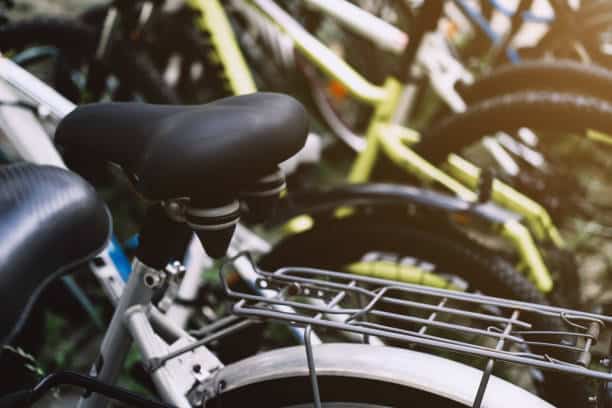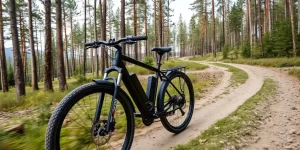Introduction
Electric bikes, or e-bikes, have revolutionized the way people commute, exercise, and explore the outdoors. With the added power of an electric motor, riders can tackle hills, cover longer distances, and enjoy a more comfortable riding experience.
However, one of the most critical components of an e-bike that directly impacts rider comfort and satisfaction is the seat, also known as the saddle.
Choosing the right e-bike seat is essential for several reasons. First and foremost, a comfortable seat can make the difference between an enjoyable ride and a painful one. Discomfort can lead to fatigue, soreness, and even injury, which can discourage riders from using their e-bikes regularly.
Additionally, the right seat can improve pedaling efficiency, stability, and overall performance, allowing riders to get the most out of their e-bike investment.
In this comprehensive guide, we will dive deep into the world of electric bike seats, exploring the various types, materials, features, and factors to consider when selecting the perfect saddle for your needs. Whether you’re a commuter, recreational rider, or adventure seeker, understanding the importance of a well-designed and properly fitted e-bike seat is crucial for maximizing your riding experience.
Types of Electric Bike Seats
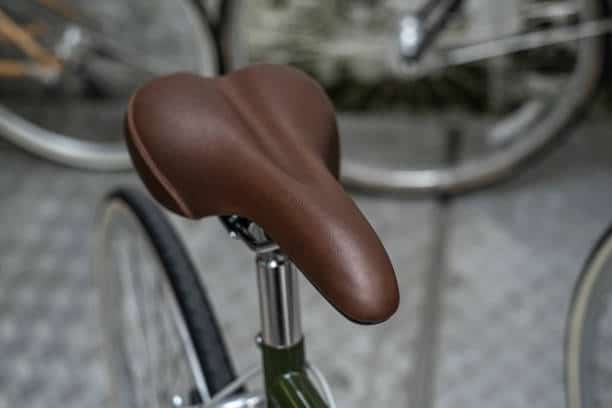
Electric bike seats come in a wide variety of shapes, sizes, and designs to accommodate different riding styles, body types, and preferences. Some of the most common types of e-bike seats include:
Cruiser Seats
Cruiser seats, also known as comfort seats, are designed for upright riding positions and prioritize comfort over performance.
These seats are typically wide, well-cushioned, and may feature springs or suspension to absorb shocks and vibrations. Cruiser seats are ideal for leisurely rides, short commutes, and riders who prefer a more relaxed posture.
Road Seats
Road seats, or racing seats, are designed for speed and efficiency. These seats are typically narrow, lightweight, and have minimal padding to allow for better power transfer and aerodynamics.
Road seats are best suited for riders who prioritize performance and spend long hours in a more aggressive, forward-leaning position.
Mountain Bike Seats
Mountain bike seats strike a balance between comfort and performance, as riders often shift between seated and standing positions while navigating rough terrain.
These seats are typically narrower than cruiser seats but wider than road seats, with moderate padding and a more tapered shape to facilitate easier movement on the bike.
Gel Seats
Gel seats feature a layer of gel padding that conforms to the rider’s body shape, providing a more customized and comfortable fit.
The gel helps distribute pressure evenly, reducing pressure points and numbness. Gel seats are popular among riders who prioritize comfort, especially on longer rides.
Memory Foam Seats
Memory foam seats use a special type of foam that molds to the rider’s body shape and then returns to its original form when not in use. Like gel seats, memory foam helps distribute pressure evenly and provides a more personalized fit.
These seats are ideal for riders who experience discomfort or numbness with traditional foam padding.
Noseless Seats
Noseless seats, or saddles without a nose, are designed to reduce pressure on the perineal area and improve blood flow.
By eliminating the narrow front portion of the seat, noseless designs allow riders to sit further back on the wider, more supportive rear section. These seats are particularly beneficial for riders who experience genital numbness or discomfort.
Suspension Seats
Suspension seats feature built-in shock absorption systems, such as springs or elastomers, to dampen vibrations and smooth out rough rides. These seats are ideal for riders who frequently travel over bumpy roads or trails, as they help reduce fatigue and improve overall comfort.
One of the primary concerns for any cyclist, especially e-bike riders who may spend extended periods in the saddle, is comfort. An uncomfortable seat can lead to soreness, numbness, and even long-term injuries. To ensure a comfortable ride, it’s essential to consider several key factors when selecting an e-bike seat.
Width and Shape
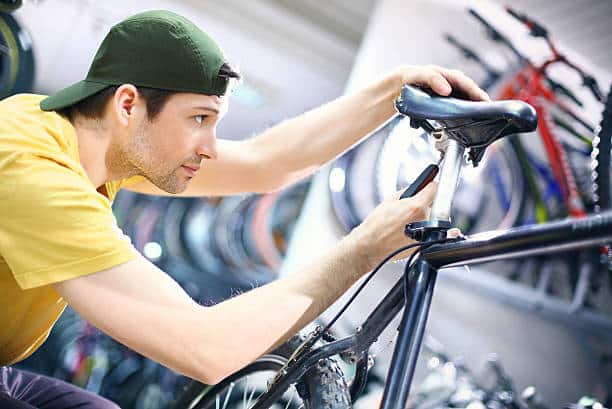
The width and shape of an e-bike seat should be compatible with the rider’s sit bone width and riding position. Sit bones, or ischial tuberosities, are the bony protrusions at the bottom of the pelvis that bear the rider’s weight when seated. A seat that is too narrow or too wide can cause discomfort and pressure points.
To determine the appropriate seat width, riders can measure their sit bone width using a simple at-home method or visit a professional bike fitter.
Generally, wider seats are more comfortable for upright riding positions, while narrower seats are better suited for more aggressive, forward-leaning postures.
The shape of the seat should also be considered, as it can impact pressure distribution and overall comfort. Seats with a central cutout or pressure-relief channel can help reduce pressure on the perineal area, promoting better blood flow and reducing numbness. Some seats feature a curved or contoured shape to better conform to the rider’s body, while others have a flatter profile for more freedom of movement.
Padding and Materials
The amount and type of padding in an e-bike seat can significantly affect comfort. While a heavily padded seat may seem appealing, too much padding can actually cause discomfort by creating pressure points and restricting movement. A moderately padded seat with high-quality, supportive foam or gel is often the best choice for most riders.
The materials used in the seat’s construction also play a role in comfort and durability. Common seat materials include:
- Foam: Traditional foam padding is lightweight, affordable, and provides good support. High-density foam is more durable and retains its shape better than lower-density options.
- Gel: Gel padding conforms to the rider’s body shape and helps distribute pressure evenly. It’s an excellent choice for riders who experience numbness or discomfort with foam padding.
- Memory foam: Memory foam molds to the rider’s body and provides a customized fit. It offers similar benefits to gel padding but may be more durable and retain its shape better over time.
- Leather: Leather seats are durable, stylish, and can mold to the rider’s body over time. They require more break-in time and maintenance than synthetic materials but can provide excellent long-term comfort.
- Synthetic: Synthetic materials, such as vinyl or microfiber, are lightweight, water-resistant, and easy to clean. They may not be as breathable as natural materials like leather but offer good durability and performance.
Pressure Relief and Blood Flow
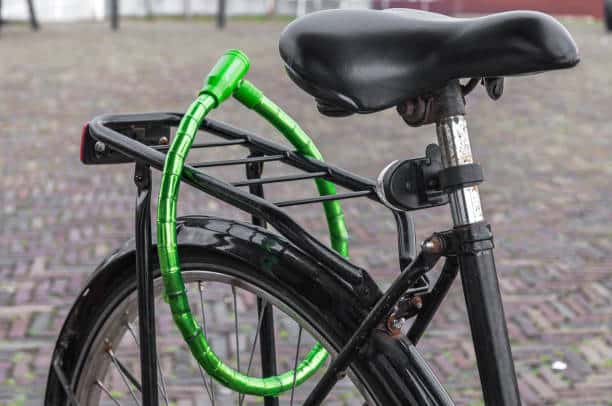
Maintaining proper blood flow and reducing pressure on sensitive areas is crucial for comfort and health. Prolonged pressure on the perineal area can lead to numbness, tingling, and even erectile dysfunction in men. To mitigate these issues, many e-bike seats incorporate pressure-relief features, such as:
- Central cutouts: A cutout in the middle of the seat helps reduce pressure on the perineal area and promotes better blood flow.
- Pressure-relief channels: Shallow channels or grooves in the seat’s surface help distribute pressure more evenly and reduce pressure points.
- Noseless designs: By eliminating the narrow front portion of the seat, noseless designs allow riders to sit further back on the wider, more supportive rear section, reducing pressure on sensitive areas.
- Anatomical shapes: Seats with anatomically contoured shapes are designed to better conform to the rider’s body, providing targeted support and reducing pressure points.
Adjustability and Fit
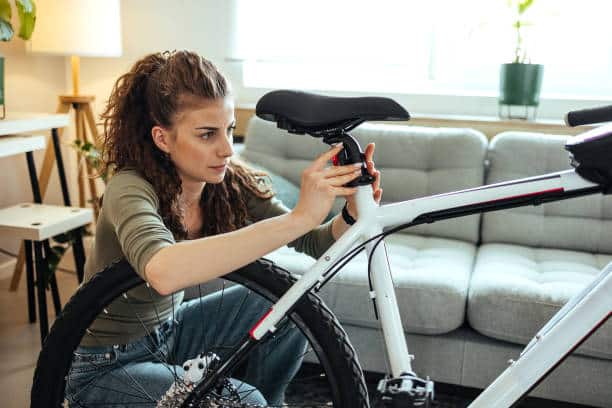
Proper seat adjustment and fit are essential for comfort and performance. An improperly adjusted seat can lead to discomfort, inefficient pedaling, and even injury.
When setting up an e-bike seat, consider the following factors:
Height
Seat height should be adjusted so that the rider’s leg has a slight bend at the knee when the pedal is at its lowest point.
A seat that is too low can cause knee pain and inefficient pedaling, while a seat that is too high can lead to hip rocking and instability.
Fore-aft Position
The fore-aft position of the seat refers to how far forward or backward it is positioned relative to the pedals.
A properly positioned seat should allow the rider’s knee to be directly over the pedal spindle when the crank arm is parallel to the ground. Adjusting the fore-aft position can help optimize pedaling efficiency and reduce knee strain.
Tilt
Seat tilt refers to the angle of the seat relative to the ground. A level seat is generally the most comfortable and efficient position for most riders.
However, some riders may prefer a slightly upward or downward tilt to alleviate pressure points or accommodate their riding style.
Quick-release Mechanisms
Many e-bike seats feature quick-release mechanisms that allow for easy adjustment without tools.
This is particularly useful for riders who share their e-bike with others or need to make frequent adjustments for different riding conditions.
Materials and Durability
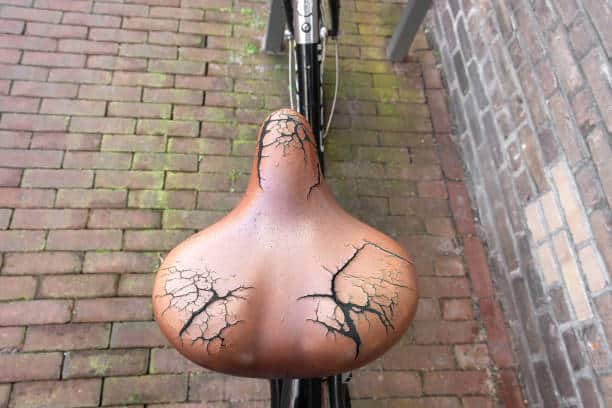
In addition to comfort and adjustability, the materials used in an e-bike seat’s construction play a significant role in its durability, weather resistance, and overall performance. Some key materials to consider include:
Seat Covers
- Leather: Leather seats are durable, stylish, and can mold to the rider’s body over time. They require more break-in time and maintenance than synthetic materials but can provide excellent long-term comfort.
- Synthetic: Synthetic materials, such as vinyl or microfiber, are lightweight, water-resistant, and easy to clean. They may not be as breathable as natural materials like leather but offer good durability and performance.
- Textured: Textured seat covers, such as those with perforations or embossed patterns, can help improve grip and breathability, reducing slippage and moisture buildup.
- Seamless: Seamless seat covers eliminate potential pressure points and chafing caused by seams, improving comfort and durability.
Padding
- Foam: Traditional foam padding is lightweight, affordable, and provides good support. High-density foam is more durable and retains its shape better than lower-density options.
- Gel: Gel padding conforms to the rider’s body shape and helps distribute pressure evenly. It’s an excellent choice for riders who experience numbness or discomfort with foam padding.
- Memory foam: Memory foam molds to the rider’s body and provides a customized fit. It offers similar benefits to gel padding but may be more durable and retain its shape better over time.
- Dual-density: Dual-density padding combines a firmer base layer with a softer top layer, providing a balance of support and comfort.
Rails and Frames
- Steel: Steel rails are strong, durable, and affordable, making them a popular choice for many e-bike seats. However, they are heavier than other materials and may be prone to corrosion if not properly treated.
- Alloy: Alloy rails, typically made from aluminum or titanium, are lighter than steel and offer good strength and durability. They are more expensive than steel but provide better vibration damping and corrosion resistance.
- Carbon fiber: Carbon fiber rails are the lightest and most expensive option, offering excellent strength-to-weight ratio and vibration damping. They are best suited for high-performance e-bikes where weight savings are a priority.
- Plastic: Plastic seat frames are lightweight, affordable, and resistant to corrosion. They may not be as durable as metal frames but can provide good performance for casual riders.
Weatherproofing and Maintenance
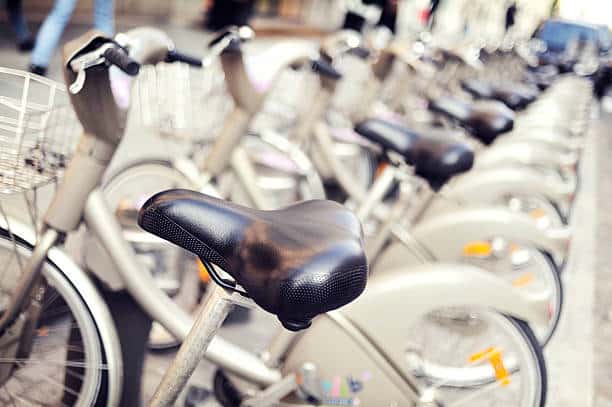
To ensure long-lasting performance and comfort, it’s essential to choose an e-bike seat with appropriate weatherproofing and to perform regular maintenance. Some factors to consider include:
Water Resistance
- Waterproof covers: Seats with waterproof or water-resistant covers help protect the padding and frame from moisture damage, extending the seat’s lifespan.
- Drainage holes: Some seats feature drainage holes or channels to prevent water from pooling and to promote faster drying.
- Sealed edges: Seats with sealed edges, such as those with welded or glued seams, help prevent water and debris from penetrating the seat’s interior.
UV and Abrasion Resistance
- UV-resistant materials: Seats with UV-resistant covers and padding help prevent fading, cracking, and degradation caused by sun exposure.
- Abrasion-resistant covers: Covers with high abrasion resistance, such as those made from durable synthetic materials or reinforced leather, can withstand frequent contact with clothing and other surfaces, reducing wear and tear.
Maintenance and Cleaning
- Regular cleaning: Regularly wiping down the seat with a damp cloth and mild soap helps remove dirt, sweat, and debris, preventing buildup and extending the seat’s lifespan.
- Conditioning: For leather seats, applying a leather conditioner every few months helps keep the material supple, prevents cracking, and improves water resistance.
- Tightening and adjustment: Periodically checking and tightening any bolts or screws, as well as adjusting the seat’s position, ensures optimal performance and prevents damage caused by loose or misaligned components.
Eco-Friendliness and Sustainability
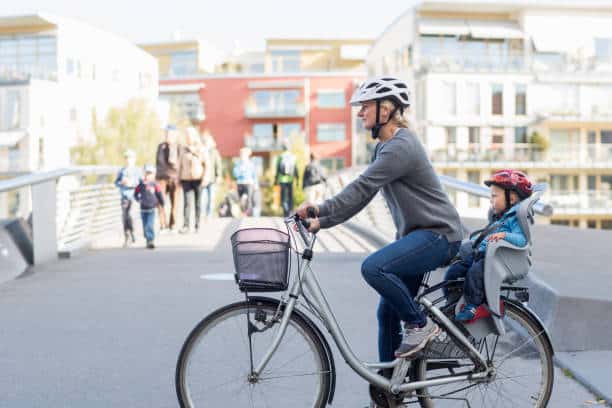
As concerns about environmental impact and sustainability grow, many riders are seeking e-bike seats that align with their values. Some eco-friendly and sustainable options include:
Recycled Materials
- Recycled plastic: Some seat frames and covers are made from recycled plastic, reducing waste and minimizing the use of virgin materials.
- Recycled foam: Padding made from recycled foam helps divert waste from landfills and reduces the environmental impact of production.
Biodegradable and Natural Materials
- Biodegradable foam: Seats with biodegradable foam padding, such as those made from plant-based materials, break down more easily in the environment and reduce long-term waste.
- Natural fibers: Covers made from natural fibers, such as organic cotton or hemp, are biodegradable and can be produced with fewer chemicals and less environmental impact than synthetic materials.
Ethical and Sustainable Production
- Fair labor practices: Choosing seats from manufacturers that prioritize fair labor practices and safe working conditions supports social sustainability and ethical production.
- Local production: Seats made locally or regionally can reduce transportation emissions and support local economies.
- Durable design: Investing in a well-made, durable seat that lasts longer can reduce waste and minimize the need for frequent replacements.
Price Range and Value
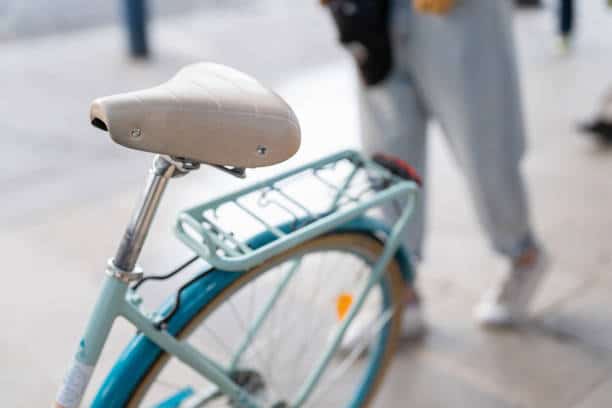
E-bike seats are available at a wide range of price points, from budget-friendly options to high-end, premium models.
When considering the cost of an e-bike seat, it’s essential to balance your budget with your comfort and performance needs.
Budget Seats ($20-$50)
Budget seats are typically made from lower-cost materials, such as plastic frames and synthetic covers, and may have less advanced features or adjustability.
While these seats can provide adequate comfort for casual riders or short trips, they may not offer the same level of durability, support, or pressure relief as higher-end models.
Mid-Range Seats ($50-$100)
Mid-range seats offer a balance of comfort, performance, and value. These seats often feature higher-quality materials, such as steel or alloy rails and more durable covers, as well as improved padding and pressure-relief features.
Many mid-range seats also offer better adjustability and fit options, making them a good choice for regular riders or those with specific comfort needs.
Premium Seats ($100+)
Premium seats are designed for riders who prioritize comfort, performance, and durability above all else. These seats often feature advanced materials, such as carbon fiber rails, high-density foam or gel padding, and top-grain leather or high-end synthetic covers.
Premium seats may also incorporate cutting-edge technologies, such as 3D-printed padding or customizable fit systems, to provide the ultimate in comfort and support. While these seats come at a higher cost, they can be a worthwhile investment for serious riders or those who spend long hours in the saddle.
Ultimately, the best value for an e-bike seat depends on your individual needs, preferences, and riding style. It’s essential to consider factors such as comfort, adjustability, durability, and weatherproofing when selecting a seat, rather than relying solely on price as an indicator of quality.
Conclusion
Choosing the right electric bike seat is a critical decision that can significantly impact your riding comfort, performance, and overall enjoyment. By considering factors such as seat type, width and shape, padding and materials, pressure relief, adjustability, durability, and eco-friendliness, you can find the perfect saddle to suit your needs and preferences.
Remember, investing in a high-quality, well-designed e-bike seat is an investment in your riding experience. A comfortable, supportive seat can help you ride longer, farther, and more efficiently, while reducing the risk of discomfort, numbness, and injury.
As you explore the wide range of e-bike seats available, take the time to research your options, read reviews, and, if possible, test out different models to find the one that works best for you.
With the right seat, you’ll be able to fully enjoy the many benefits of electric biking, whether you’re commuting, exercising, or simply exploring the world on two wheels.


